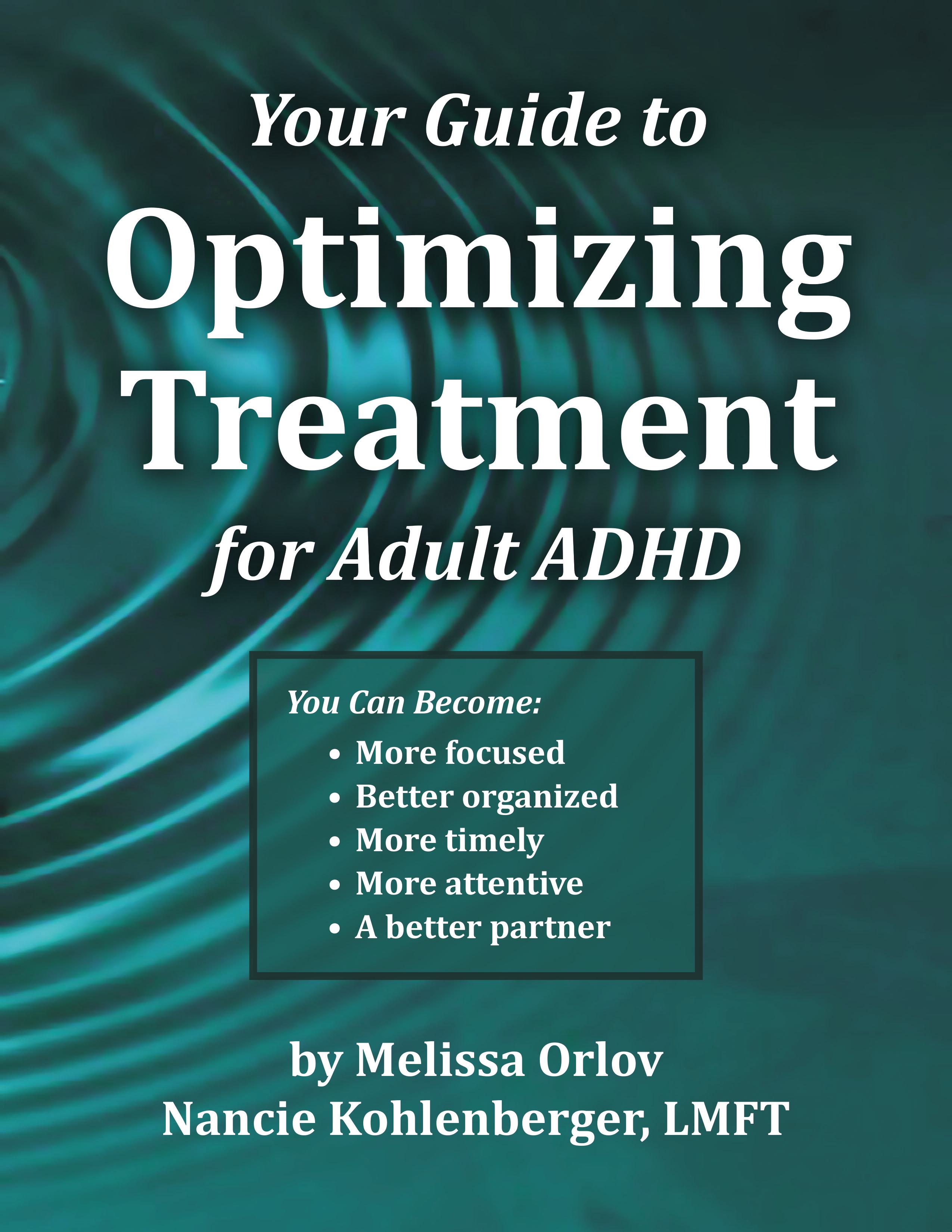You may be frustrated at the slow progress that seems to happen in your relationship. You push and push, yet little seems to change. You may have read about my comment that “If nothing changes, nothing changes” elsewhere on this blog – I woke up this morning wondering if we could use this idea to help couples make progress, and wondering if a few of you might like to join me in an experiment that might improve your marriage. Read on, and you’ll find the experiment at the end.
My insight is this – people often equate “doing something” with making progress…you can easily think of examples at work, school and at home (“busy-work” vs. meaningful work, responding to time consuming but unproductive emails, etc.) As you try to put your marriage to rights, though, non-productive work is a real problem because it fosters resentment. You hate all the effort you put in that doesn’t seem to reward you with any benefits, right?
So, instead of asking “did I do something today?” or "did I try something today?" and measuring your effort against the yardstick of the amount of work you’ve done, measure it against the concept of “change”. By this I mean physical, measurable change. At the end of the day, you and your spouse ought to be able to list some number of things that you physically changed. This gets to the issue of “trying” vs. “doing”. I hear non-ADD spouses complain all the time that their spouse says “I tried” when, in fact, they see no measurable evidence that it’s true. And I think that, often, ADD people don’t think in terms of physical changes because they are so used to hearing “try harder” and have come to accept “trying harder” as one measure of success. It’s only success, though, if the trying brings actual results in specific positive change or movement.
So, what might it look like if you started measuring change, rather than doing something?
Some Examples of Change:
- An intermittent taker of medications starts taking meds every day
- A verbally abusive non-ADD spouse changes her tone of voice
- An undiagnosed person suspecting he has ADD makes an appointment to get an evaluation
- A woman who has forced her spouse to sleep on the sofa lets him return to their bedroom
- A man who has an internet porn addiction goes to his first support group meeting
- A woman suffering from chronic anger buys a book to learn how to start to control her anger…and shares her experience in reading it with her spouse to start their conversation about her needs
- An ADD spouse who has refused to consider he might have ADD buys a book on the topic and reads it.
These are all ideas that people who have written on this site could use to make some measurable changes in their relationship. Not one of these changes will “fix” their relationship…but it will start them on a positive path. And adding more positive, measurable changes on top of that will soon cumulatively create a new environment.
The hardest changes of all are those that make you vulnerable and these are often peace symbols – like the woman who lets her husband back into the bedroom, or the man who buys the book on ADD. Yet they are also the most important changes…for they have the potential to move a couple out of gridlock.
So here is my proposition:
I would like to start an experiment with some of the couples who participate at this site. Is anyone willing to try to start measuring “change” and report back on what happens? Both members of the couple need to participate, and would agree that at set intervals (day, week) they will talk with each other about the concrete changes they have made. Here’s the script I propose for these check ins (in this case one change a day):
What change did I make today?
Can you see that I’ve made that change?
How will it help us in the long run?
That’s it – three simple questions, to be discussed by the couple for a maximum of five minutes. If the other spouse can’t “see” the change, then perhaps it needs to be approached from a different direction. For example, one spouse might say “I posted notes reminding me to be nice to you. I bit my tongue on three nasty things I wanted to say to you. I think this will help us in the long run because my being nicer to you will help you get along with me better”. The note would be a physical change. But if the next day or week shows no signs that the tactic was effective (i.e. the notes didn’t encourage the better behavior), then time to try a new tactic. Also, the spouse might respond to clarify the goal, for example “I hope that posting the notes does help you remember to be nicer to me, but of course I would want you to feel better about me, not just act nicer but be seething inside.”
You can see how this might help open up the conversation about what is working and what isn’t working, and how measuring change can help push the conversation along. But note that I've set the conversation for 5 minutes max. That's so you don't get bogged down in bringing up other topics...and so that the couple will not avoid the exercise because it takes too much time (the changes are the important part...the discussing just serves the purpose of solidifying the improvement and the knowledge that things are moving forward.)
So – if you’re up for it, please try it out for a while…and let me know the results. Feel free to post “status reports” along with this blog post.
And remember – “if nothing changes, nothing changes”….Good luck!
- MelissaOrlov's blog
- Log in or register to post comments









Comments
I initiated this sort of
I think there is a big
I think there is a big difference in "trying" and "doing". My husband thinks it it the same thing just different wording. I think your rule number one speaks volumes "no change is no change". Yes maybe the behavior has lessened in some ways, but it is still there, and I have no control if he gives it up or not. I just have to do what I said if he doesn't change. Right now I have very little hope. I don't think my husband would participate in this, it would just add to the trapped feeling and the "itch" and it seems he has found what takes that away. It's just to bad that he is going to loose everything else because of this boredom or "itch" or addiction, or how ever else you want to define it. The funny thing is that he tells me he could quit the drugs and gambling because of the immediate consequence, and I do understand that. But is this that is going to be the biggest consequence and one we will all have to live with for the rest of our lives. Hope others take Melissa up on this, because I think it is a great experiment. Peace and Happy Valentine's Day
trying and doing
What do you do when your ADD spouse will not go to counseling. This is our second time around at his request and now he is refusing to go. I am at my wits end! All my children see are a Dad who sleeps constantly with little interest. Everything is put on me to do - He even has the kids doing what he doesn't want to do. He will not talk about medication, money or anything that requires "consciousness". I can't fix him and he is not willing to help himself. Divorce seems to be the only option. I feel very alone and overwhelmed.
Trying and Doing
My husband is the same way. He won't consider working on his ADD in any way. He's also grieving the death of his father and every stress makes the ADD symptoms worse. I'm always trying to find the answer to "what to do." For me, reading Melissa's blogs has been a source of strength. I've been working to consider my own happiness first and to make that a priority. I've given away so much of myself for 30 years that I feel I've created an enormous "debt" within myself. The only way that I see to pay the debt is to take more time for myself. I have too much on my plate, so my changes are very small. If I can spend a few more minutes each day exercising, relaxing, meditating, praying, or pursuing some hobby that fulfills me, then I feel I'm making progress. Even a few minutes a day helps me feel like I'm taking better care of myself. I spend a few minutes each day, morning and evening, being grateful for what I have in my life. I have so many blessings in my life - my kids, the beautiful weather, chocolate (!), etc. I also work to be consciously grateful for all the challenges in my life, knowing that they always lead to greater blessings if I let them! That may sound corny, but it's worked for me through some very hard times throughout my life so I know it's true. Another corny truth is that laughter breaks up negative energy faster than anything. There are times when my laughter is pretty strangled or comes through my tears, but it helps. I have some funny DVDs that always get me laughing, and when all else fails, I'll turn them on to help me lighten up a little.
I do see a therapist occasionally, and his advice is also about taking care of myself. He recently suggested that I take a class or do something new and different. I'm working on that one. I don't share much about my relationship with family or friends, so it's pretty lonely. I journal a lot, even if most of it gets deleted or shredded. Connecting on this website helps too, because I know I'm not the only one dealing with these issues.
On recommendation of this group, I've started reading "Dance of Anger." I'm always looking for new ways to improve my relationship with my husband, knowing that I'm going to be doing most of the work involved. I don't want to get a divorce now, but can't see myself staying with him for always. The price is too high, and there's not much energy coming back to me. I don't need a lot of attention or nurturing, but I do need something. I don't know if any of this will help you. Like so many things in life, there isn't one clear answer. You try things and they fail, and you try again and get some success. Learn to take care of yourself and then your kids. I wish you well.
Trying and Doing....
Thank you for your kind words. I am very overwhelmed! I can relate in what you said about taking care of myself and kids. I am actually finishing some course work now for my Masters - I don't have his support at all. It's been rough having to balancing the needs of my kids and his lack of involvement. I am so tired of the rollercoaster.....I need to get off. I have MS myself and his attitude, issues and the like are certainly not taking my health into account. If I left him his life would fall apart. I've been the glue. But, I have to tell you honestly - I'm on my last leg with him. I just want it to be done, but know it will never truly be that way.
Thank you...I now feel like someone understands my world.
Refusing Counseling
Have you talked in depth about why he is refusing counselling? If it is because he didn't like your counselor, suggest you'll find a new counselor (make sure to find one that focuses on TODAY, not yesterday). If it's because he hates counseling in general, ask him why...likely has to do with his feeling as if it's one big excuse to blame him for all of your troubles - promise him that you will actively work to make sure the counselor helps the two of you find solutions, not blame. Does he think its a waste of time because you aren't holding up your end, or because he can't hold up his? Explore his reasons and see if there are reasonable alternate approaches.
I'm not a doc, but quite frankly, he sounds as if he is in a serious depression. Also, he might be suffering from sleep disorders (making him want to sleep during the day?) - I've had a number of folks say they've had good results once sleep apnea was diagnosed for their spouse. See if he might consider talking with his doc about whether or not he's depressed.
You owe it to him, if you are serious about divorce being the only other option, to make sure he understands that your condition for staying in the marriage is that he agree to counseling (if that is indeed the case...perhaps it's not since he was the one to initially suggest it, not you). Make sure you have thought out all of the issues surrounding divorce before you bring this up - how you will support yourself, what type of custody arrangement will happen, where you will live, what mediator you might use...and that you are comfortable with that all...because after you tell him that he must go to counseling or its divorce, he may choose divorce. (We can control what we say to people, but we can't control their responses.) At that point, you'll be faced with a decision about moving out (or moving him out, depending upon your thinking...which is one reason why it's important to think about this stuff ahead of time).
He doesn't feel like he needs
He doesn't feel like he needs anyone to talk to - he's fine and it's just me. The counselor we have gone to has been very careful not to push him, but rather suggests, gives examples and encourages having his med evaluated. He does have sleep apnea - took the sleep study and has a mask to wear but CHOOSES not to wear it because it is not comfortable - doesn't like it. I don't doubt at all that he is depressed however, how do you continue to help someone who does not want to help himself? I can only do so much.
Sleep Apnea
Let me get on my soapbox for a minute. I may not know much about ADD but I do know about sleep apnea because I have it!
Sleep apnea is a real physical condition. I always feel asleep watching tv. I had to drop some classes because I couldn't stay awake. I got sent home from work several times (without pay) because I fell asleep.
Sleep apnea also correlates with strokes. They aren't sure whether the sleep apnea causes the stroke or whether they simply have a common cause. Now I am reading that all stroke patients should be evaluated for sleep apnea.
I use the CPAP with the mask. The first night I was sure I wouldn't sleep, but I slept like a baby and I only got up once in the night to pee instead of 4-5 times. Now I can work all day and take night classes, and get As.
Your husband CAN get used to it. They even have ones now that just use a nasal canula, just two small tubes that go in the nose. He will feel so much better he won't believe it. He might even find he has the energy to help with the children and help around the house, so you won't have do everything. It will improve his mood. It is very selfish to refuse to use it. If I were in your shoes, I'd make getting a solution to his sleep problems a requirement for staying married.
Ok, I'll get down from my soapbox now. Your husband can feel better and be a better husband. He's lucky to have a machine, it took me 3 years from diagnosis to treatment because my husband decided he didn't need to work any more, or keep insurance on me.
Sleep Apnea
I agree entirely - it's selfishness.
sleep apnea selfishness
is it possible that selfishness isn't underlying his resistance, but something else? Perhaps fear (having a mask on), or a depressed feeling that nothing will really help? Does he know all of the effects of sleep apnea so that he's more motivated than just having someone tell him he "has something"? Does he feel that trying it more would be somehow dangerous in terms of how he'll be treated by you?
Consider other motivations, then think about asking him to do this as an experiment for just one week. If, after a week, he hasn't adjusted or found the mask to be useful you'll drop the subject completely. If he says it's uncomfortable, you might point out that carrying a child around in your belly for 9 months is also uncomfortable, as are braces, getting a filling and lifting weights...but sometimes we undertake things that are uncomfortable because the potential gain from them is worth the initial discomfort.
sleep apnea selfishness
I agree with your comments. He is aware of the possibilities that can occur w/o the mask. He would rather be stubborn. Whenever I point out the health risks he gets very defensive and turns it around on me. He will never take responsibility for his own actions because its easier to blame me or anybody else. Why face issues if you can blame them away. You don't have to really deal with reality then. It is very disappointing.
So what do you do....
At counseling tonight my husband decided that he does not need to be involved any longer. He doesn't feel that he needs to go or that it makes a difference. Furthermore, he told me that he will not be taking ADD medication or wear the sleep mask. In fact, he thinks that he might stop taking the zoloft he is now taking. I guess I have my answer. I am living alone in this....
This scenario sounds
This scenario sounds familiar. I had the same issue for the first 10 years of my marriage. I got him to the therapist, but he would sit there and say that he thought everything was just fine, so I must be the one with the issues. Of course, the therpist (untrained in ADD) would naturally agree, considering that my anger, hurt, and resentment just came pouring out. Clearly, I was the one that needed therapy. This scene played itself out several times with several different therapists. The silver lining is that I went through a lot of individual therapy (which should have been couples sounseling) and I have grown and evolved in ways I would never have dreamed possible. I am such a different person now from the person that I was when this all began. And I am proud of my strengths and my personal accomplishments.
It used to make me very upset that he would put on this show for therapists and come out smelling like roses, and I was as usual left to clean up the mess! I think what finally changed things was when I approached a friend of his that he admires and thinks very highly of. I explained my situation to him and told him that if my husband did not start taking therapy seriously, and I would go to any therapist of his choosing, I would leave. Granted, I had threatened this before, but I had never shared this thought with anyone other than my husband. Whatever this friend said must have made an impact because the next therapist we went to, he finally started to admit that there were issues. I can't say that therapy has really done much for us, because of his inability to see things through, but at least he doesn't sit there anymore and say sweetly, "But I don't think there is anything wrong."
Looking for my marbles
Tami
Yes I think many of us experience this to varying degrees! My advice is keep reading, learning and talking. I recommend counseling for yourself to express the overwhelming feelings that come up in a safe non- judgemental way. I find this to be a great help for myself. It doesn't change my ADHD husband but it helps me deal with him better. Are your husband and children on meds?
God bless your family
Lost Marbles
Lost my marbles....
I know exactly how you feel. In fact, I just told my social worker yesterday that I thought I was loosing my mind. I can't keep track of his emotions anymore. I continue to be surprised at his shifts in attitude - it catches me off guard a lot of the time. Wish I had some survival tools to fill your box - I am definitely in need and so are my girls.
What strikes me about your
Striking?
Anything is possible. But, of course, without taking the steps to really determine this I can only go by what I already know. I really am left to wonder why about a lot of things. It's sad that he refuses to deal with anything - for me and the girls. I can only take care of myself. I know the stronger I get the less time he will have to do what he needs to do - take meds etc. before I just decide I'm done. Sometimes I feel like a real idiot - most women, I think, would have left by now. It's very hard to make these decisions given that the economy is the way it is and my hands are tied. All I know is that I can't make someone want to change. They need to do that for themselves. I hope as time goes by things will become more clear. I pray every night.
Looking for Marbles . . .
Mood or not....
My husband refuses to see a doctor to get "properly" treated. The only meds he takes are zoloft - 150 mg. Even that, I feel, is not enough. It's quite possible that anything is possible.... At this point, I don't think it's a question of treatment - that's off the table completely. It's a question of how long I will deal with this. Wouldn't you think so??
I think that you have
I think that you have stumbled onto something big. You said that you have a great relationship for a while, and then it disappears. The same thing has been happening to me for years. For a short while (a week to a month) I am living with the most amazing husband-attentive, considerate, loving, thoughtful and then all of a sudden, poof, it's gone, and only a self-absorbed defensive man is left. No more partnership, no more working towards a great and sustaining marriage. Perhaps this is why all of us stick around-because of the illusion. We have seen the other side of our spouse-the potentially great husband and marriage- and we are rooted to our spot because we keep thinking that this time will be different. This time it will last.
I think that you have
I agree with you on this. It's like they re-enter the relationship from time to time to re-fuel before they go back out for another fun seeking adventure. As I get older, I wonder how much longer I can remain rooted to my spot. It never is different, I'm tired and my roots are beginning to rot.
What you all are talking
What you all are talking abour seems to be a trait. My husband did the same thing when we were together. Now that we are seperated he still acts like that. Sometimes he is nice as pie then he acts like a jerk and we can't even talk. We just text message to each other. I think he realizes that we are done however he nor I have really talked about our relationship for months. He isn't working and living with a friend. He at least is spending quality time with our kids except my oldest(different father). He can't bring them to where he lives so he does stuff with them and the kids love it. In the end before he left if looks could kill I would be dead. It was like he turned and started to look mentally ill. At one point he shaved his head not because he thought it was cool. I do think with all the stuff he did and him losing his job he snapped. Thats what I think can happen with (bi polarmanic depression). Do your husbands do really off the wall stuff like carry a gun in a public place because they think to protect themselves and others? he also has suicidal thoughts when stress arises but I know he wouldn't hurt anyone and is a good dad. I think the snapping comes with the depression.I don't know I'am not a proffesional. I've come to the point now where I'am just taking care of myself and the kids. My youngest who has Adhd/Odd is very defiant at times and can be a challenge like his dad.He is doing well though.PLEASE don't let your roots rot. If nothing changes don't stay because you think things may change one day or its just your lot in life. I'am feeling so good now except for my health problems and I'am finding myself again. Living with any mental illness can be so hard. My mom had post dramatic stress from the war. My father couldn't deal with it anymore and divorced her when I was young. My mom just fell apart and by the time I was 10 yrs old she ended up in a institution and lived there for 30 yrs till she died 5 yrs ago. I never blamed her I understood her illness. however why did I marry my husband? Why would I have married someone with a mental illness? I can honestly say that I did not know anything about Adhd until yrs into the marriage. and then I became a angry woman. (not anymore I got help). I did love the attention I got then after a few yrs into the marriage that went away. I have had a long journey(I'am writting a book) but I'am surviving and thank God my deliverer. Sorry to ramble I hope this helps someone as it helps me to write..God Bless!!!
To Optomistic
Spousal Denial
focused action
Realizing that it takes focused action to get to our goals and (as a bonus!) the support of our others/spouse, I think that this "three-questions-to-perfection" ritual is a terrific tool. If pulled from the old tool belt regularly enough (that we remember what the program was) until it becomes "second nature" to practice, then I believe it's employment reiterates to us both that we're in this together you know?